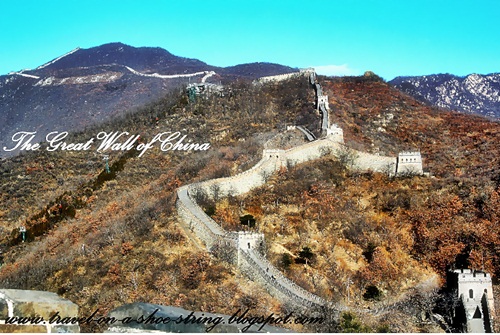VIGAN, ILOCOS SUR: My Burnay Making Adventure
Pagburnayan Pottery Making in Vigan, Ilocos Sur is a popular destination among tourists.

When in Vigan, do what the Vigans do!
I readily agreed when the Manong Kutsero (horse drawn carriage driver) ask me if I wanted to visit the Pagburnayan Factory.
Arriving in the factory in a kalesa ( Horse drawn Carriage) distinguished tourists from locals. Not only because the locals know how to speak Ilocano but also because they usually ride the tricycle or walk around town.


Burnay technology was brought to Vigan by Chinese artisans, who, according to Vigan folk historian Damaso King, came from Kwi-Sao, Chun-chiu province in Mainland China. As such, it may have existed in the area even before the coming of the Spaniards in 1572. These Chinese artisans who set up this cottage industry depended on the natives for their clay supply and labor.Fidel Go, owner of the Ruby Pottery and descendant of the first Chinese potter who came to Vigan, has his own account of the burnay industry’s history in Vigan.

Burnay Making
According to him, burnay technology was introduced to Vigan around 1890 by Pedro Go, a Chinese settler from Chinkang, in Fukien, Mainland China. He set up his camarin (jar factory) along what is now known as Rivero Street in Brgy. VIII. Around 1916, Ongkai Go, son of Pedro Go’s brother, came to the Philippines and worked with him, then went back to China to marry when he was 18 years old.
Ongkai came back to the Philippines around 1922, now with his cousin Igan Go, to set up their own jar factory, which is now known as Ruby Pottery. At such time, there were five (5) burnay factories in Vigan – that of Pedro Go, of Igan Go, and of relatives Ramon Go (owner of RG Jar Factory), Buki Go, and Domingo Go. The separate camarin of the last four (4) were all along what is now known as Gomez Street in Brgy. VII.
Fidel Go is the son of the late Ongkai and inherited the Ruby Pottery from Igan Go. He was awarded the Gawad Manlilikha ng Bayan (National Folk Artist Award) of the National Commission on Culture and the Arts in 1990 for continuing the craft he inherited and for himself knowing all the rudiments of the craft. He claims that between the two (2) surviving Chinese-owned jar factories, he is the only one (now with one of his sons) who still does pottery himself.
Zosima Amistad, wife of Pedro Amistad, the proprietor-potter of NP Jar Factory, supplies supplementary information to Fidel Go’s story.
She remembers that there used to be seven (7) jar factories (presumably at a time when Pedro Go’s camarin already went out of operation). Aside from the four (4) already mentioned, there were those of Filipinos Jovencio Adora along the present Katipunan Street, Nicolas Amistad, and Evaristo Amistad whose camarin were near the southern end of Rizal Street.
Nicolas Amistad and Evaristo Amistad were the son and nephew of Iban Amistad respectively. Iban Amistad learned the craft while working as cook of one of the Chinese factory owners. According to Zosima, Iban learned to mold jars in the potter’s wheel while his Chinese master went away to gamble. He then taught his son Nicolas who later set up the NP Jar Factory. Nicolas’ son, Pedro Amistad, inherited the said jar factory and like Fidel Go, himself molds jars, sometimes with the help of one son.
Today’s Barangay VII is still more popularly known as Pagburnayan, which literally means “place where burnay is made”. This section was so aptly called because all the burnay camarin (cottage factories) were located in this southwesternmost part of the poblacion.
But about 15 years ago, there were only four (4) burnay factories left in Vigan. Three (3) belonged to Barangay VII’s jurisdiction, and one (1) under Barangay VIII, but all were neighbors.
However, one of the burnay factories (that within Barangay VIII) ceased its operations in the last decade. Presently, three (3) burnay factories remain: RG Jar Factory, Ruby Pottery, and NP Jar Factory. These burnay factories are the only ones found throughout the country.
At present, a variety of burnay products are made, mostly for decorative functions. These are jars of different shapes, sizes and designs, plant pots, ashtrays and others.
These are marketed within the country and abroad. The factory owners’ business contacts, other local and foreign traders order the jars with specifications or purchase these on the spot. About four (4) traders from Bulacan and some others from Manila frequent the jar factories in Vigan. It is said that the Bulacan Garden in Manila is the strongest dealer of burnay. Other Filipino and foreign exporters also patronize the Vigan burnay jars.
Volume purchases or orders are bought at discounts and are transported to other places by hired freight service. In one instance, Ruby Pottery delivered three freight loads of jars to an international shipping line to satisfy the order of a foreigner businessman who would take these to Belgium. While exportation is not yet regular, demand continues to expand to other foreign countries (e.g. Great Britain).
Local and foreign tourists also buy jars directly from any of these factories. Since Pagburnayan is a must-see section in Vigan tours, jars, especially the miniatures, are easily sold. The miniatures have a potential for expansion as they are bought and resold with some value added, as in converting these into painted decorative items.
Source: "Lifted from the Vigan Ethnographic Studies by VMP Socio-Cultural Team"









